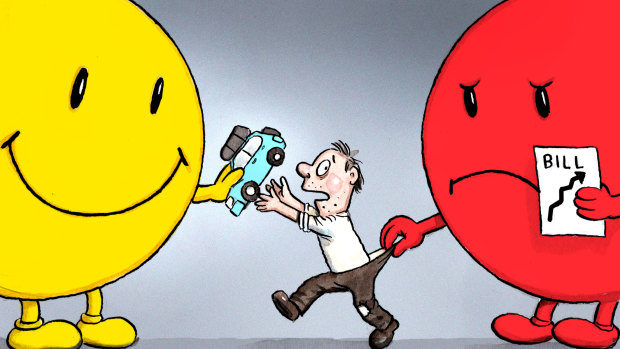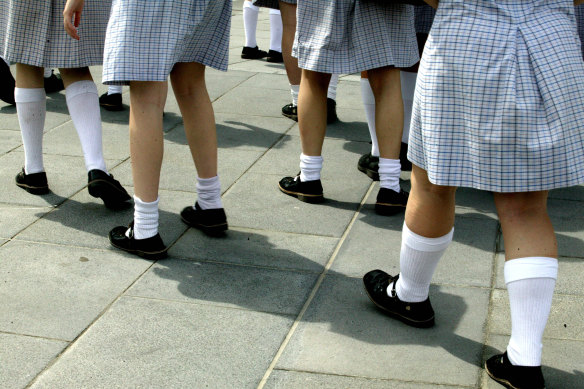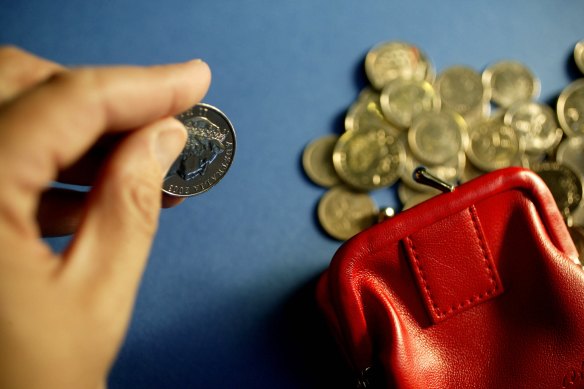This was published 3 years ago
Opinion
The economy is working well for some, but not for all
Emma Dawson
ContributorAmid the gloom of another winter of social distancing and masking up against the mutating and ever-spreading virus, last week’s employment figures brought some welcome news, with the unemployment rate dropping back to its pre-COVID level of 5.1 per cent. Despite ongoing outbreaks of COVID across the country, it seems that Treasurer Josh Frydenberg was right last month when he said the Australian economy was “roaring back to life”.
Yet for too many Australians, merely snapping back to the economic conditions of the pre-pandemic years won’t be such good news. Eminent economist Professor Ross Garnaut has labelled the era preceding the onset of COVID in Australia “the dog days”, due to persistently low wage growth. While the economy continued to grow between 2013 and 2020, the gains were unevenly distributed, with wealth accumulating at the top of the income pile while average households saw their real incomes decline.

Working families feel they are slipping behind because of an increase in the cost of basic needs and a drop in the cost of discretionary items.Credit: John Shakespeare
This, Garnaut says, explains why many Australian families felt their living standards were slipping, even as headline economic figures told us we were enjoying the biggest run of economic growth in history. Statistics such as gross domestic product and unemployment rates don’t always accurately capture the reality of the economy and its impact on typical households, but a new data set from the Australian Bureau of Statistics (ABS) enables us to see more clearly what has happened to household living standards over the last decade.
It went largely unnoticed amid the constant thrum of COVID news, but last month the ABS made a significant shift in the way it measures inflation, using the Consumer Price Index (CPI) to produce two sets of inflation figures, for non-discretionary and discretionary inflation.
This is a welcome, and long-overdue, development in the way we understand the economy. The CPI measures changes in the price of goods and services purchased by the typical Australian household. It’s a key measure of inflation, or the cost of living, and informs monetary and fiscal policies such as the setting of interest rates and unemployment benefits.
For more than a decade, economists have struggled to explain why inflation, and hence wages, have remained stubbornly low, even with interest rates at rock bottom. This new measure provides some answers about the macroeconomic environment, but its real power lies in what it reveals about household living standards, and the news is not good.

The cost of good and services considered necessary to maintain living standards, including education, has risen while the price of non-essential goods and services has fallen.Credit: Gabrielle Charotte
The ABS defines non-discretionary household spending as that spent on “goods or services which are purchased because they meet a basic need (food, shelter, healthcare), are required to maintain current living arrangements (car maintenance, school fees), or are a legal obligation (compulsory insurance, stamp duty)” while discretionary items are those “which could be considered ‘optional’ purchases, such as takeaway meals, alcohol and holidays”.
Broken down this way, the figures released last month reveal that, during the “dog days” before the COVID recession, the price of non-discretionary items increased by 14.8 per cent, while discretionary inflation was 12.9 per cent. Not too different – but when you take out the cost of tobacco, which doubled between 2012 and 2019, discretionary inflation was just 6.4 per cent. As less than 15 per cent of Australians are regular smokers, this lower figure is a more accurate reflection of the typical household.
That is, the cost of the things households must buy to maintain living standards has risen twice as much as the cost of the things we buy with the disposable income left over when our basic needs have been met.
As the ABS notes, spending on non-discretionary items “may be less responsive when there are changes in household wealth and incomes” – which is economist speak for the fact that there are some things, such as housing, electricity, healthcare and food, that we have to pay for, no matter how much they cost relative to our incomes.

Since 2013 the real cost of living has grown faster than wages.Credit: Gabriele Charotte
What this new measure shows is that, in the years since 2013, the real cost of living has been growing much faster than wages. This is a significant finding, and matters especially to our understanding of the lives of low- and middle-income families, who spend a much higher proportion of their income on essentials. For the lowest 20 per cent of income earners, non-discretionary spending takes up close to 100 per cent of their income, while for the richest fifth, it’s more like 60 per cent.
Obviously, when you’re paying more on rent, electricity, healthcare and food every year, while your wages aren’t growing much at all, you’ve got less money to spend on things that are “nice to have”, such as a holiday or a new TV or toys for the kids.
For Australians on fixed incomes, such as the age pension or unemployment benefits, which are indexed to wages or to standard CPI, the situation is particularly dire: after paying for the rising cost of their daily needs, they have virtually no discretionary spending power left.
This new data set, which will be released quarterly from September 2021, shines a light on the reality of the economy for ordinary working Australians. After all, the economy should be about us - our living standards and enjoyment of life. When the real cost of living is rising faster than wages for ordinary working families, the economy’s not working for far too many of us.
Emma Dawson is Executive Director of Per Capita.